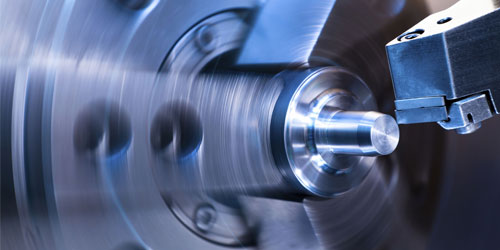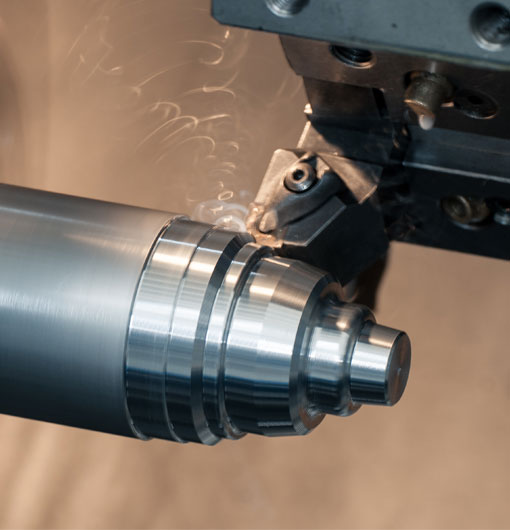As an ever-evolving craft, CNC turning constantly pushes the boundaries of precision and accuracy. One application that often requires flawless execution is chamfering. In this in-depth guide, we will explore chamfer CNC turning tool path optimization to achieve flawless results, reduce wastage, and improve efficiency.
What is Chamfering?
Chamfering is the process of creating a beveled edge at the intersection of two surfaces, often at a 45-degree angle. It serves various purposes, such as deburring, easing sharp edges for safety, facilitating assembly, or improving the aesthetics of a part. Chamfering is commonly used in woodworking, metalworking, and plastic manufacturing.
The Importance of Tool Path Optimization
A tool path is a series of coordinated movements made by a CNC machine to achieve a specific cutting operation. By optimizing the tool path, it's possible to maximize material removal rates, reduce cycle times, minimize tool wear, and ultimately achieve a higher-quality final product.
In chamfer CNC turning, tool path optimization is essential to ensure precise and consistent results. An optimized tool path can help prevent tool deflection, limit heat generation, and improve surface finishes. This attention to detail is especially important when working with delicate or intricate components.
Choosing the Right Chamfering Tool
Selecting the appropriate chamfering tool is critical, as the cutter geometry can greatly influence the overall outcome. There are numerous chamfering tools available, including:
1. Chamfer Mills:These tools have a conical cutting head designed for milling chamfers on flat surfaces.
2. Chamfer Cutters:These cutters are designed specifically for chamfering applications, providing more accurate results and a longer tool life.
3. Indexable Chamfering Tools:These tools use replaceable inserts, allowing for quick and cost-effective tool changes.
4. Combination Tools:These multi-function tools can perform both chamfering and other operations, such as drilling or countersinking.
To choose the right tool, consider factors such as material type, intended usage, required precision, and budget constraints.
Understanding Chamfer Angles and Depths
When programming tool paths for chamfering operations, it's crucial to consider the chamfer angle and cutting depth. Chamfer angles typically range between 30~ and 60~, with 45~ being the most common.
The cutting depth will affect the overall size and appearance of the chamfer. Higher cutting depths result in wider chamfers, while shallower depths yield more subtle transitions. Cutting depths should be carefully calculated to ensure a smooth, uniform chamfer along the entire edge.
Developing Efficient Tool Paths
To optimize the chamfer CNC turning tool path, consider the following strategies:
1. Minimize Tool Movements:Reducing the number of tool movements can help limit the machining time, extending tool life, and minimizing the risk of error.
2. Employ Lead-In and Lead-Out Techniques:Appropriate lead-in and lead-out movements can help prevent tool chatter and improve surface finishes.
3. Utilize Adaptive Machining Techniques:By adapting to varying material properties and cutting conditions, CNC machines can maintain consistent cutting forces, resulting in smoother chamfers and reduced tool wear.
4. Optimize Cutting Parameters:Adjust feed rates, spindle speeds, and depth of cut to maximize efficiency while maintaining quality.
Managing Tool Wear and Machine Maintenance
Regularly inspecting and maintaining chamfering tools can help prevent tool wear and prolong their lifespan. Monitor for signs of wear, such as chips or dull edges, and replace worn tools as needed.
Additionally, proper machine maintenance plays a crucial role in achieving consistent results. Ensure that all components are clean, lubricated, and in good working order. This includes checking and adjusting tool holders, collets, and spindle alignment as needed.
Troubleshooting Common Chamfer Issues
Despite best efforts, challenges may still arise during chamfering operations. Some common issues and their potential solutions include:
1. Uneven Chamfers:Check for tool wear, incorrect cutting parameters, or misalignment. Adjust accordingly to achieve a more consistent chamfer.
2. Poor Surface Finish:Verify the cutting parameters, tool path, and tool geometry. Make necessary adjustments to improve the surface finish.
3. Excessive Tool Wear:Review the cutting parameters, tool material, and coolant application. Consider switching to a more wear-resistant tool or adjusting the cutting parameters.
Chamfer CNC turning can seem daunting, but with a thorough understanding of the process, appropriate tool selection, and diligent attention to detail, it's entirely possible to achieve seamless results. By optimizing tool paths, maintaining machines, and promptly addressing any issues, machinists can master the art of chamfering and produce high-quality, precise components.
chamfer cnc turning tool pathfinder













